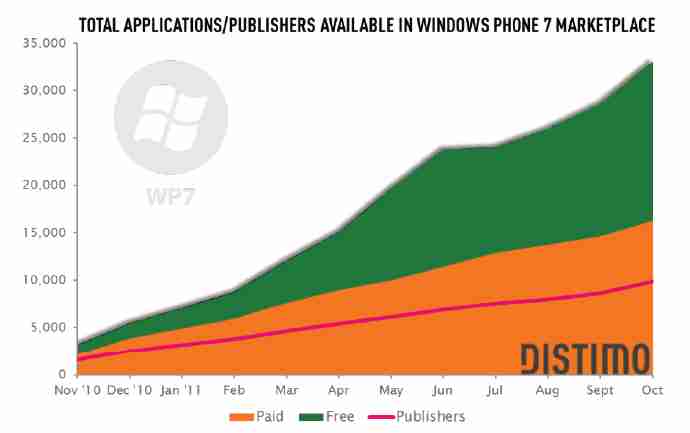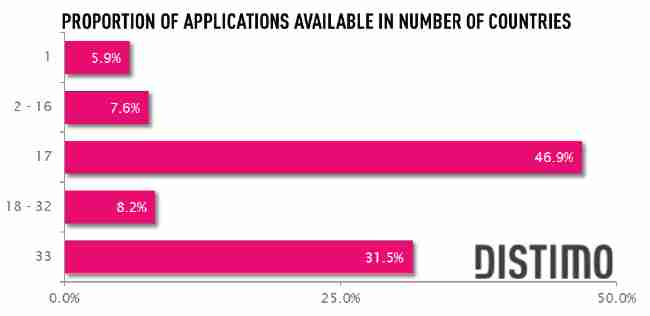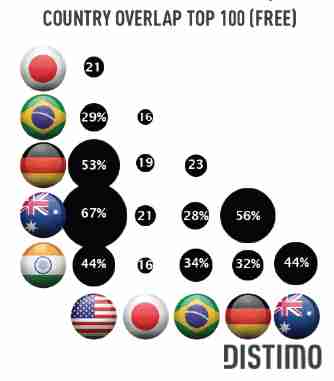| Windows Phone 1 Year On |
| Written by Janet Swift | |||
| Sunday, 27 November 2011 | |||
|
The Windows Phone 7 Marketplace was launched in November 2010. Since its launch paid applications have shown continuous growth with almost 1300 new applications added every month. In worldwide terms it is now the fifth largest OS application store after the Apple App Store, Google Android Market, Nokia Ovi Store, and BlackBerry App World.
A recent report from Distimo reveals that at launch the proportion of paid content was 70%. As the graph shows, the high proportion of paid to free applications remained constant until February 2011. After that the number of free applications started to grow exponentially and by June the total number of free applications exceeded the total number of paid applications by roughly 900 applications. The following month, Microsoft removed over a thousand free applications. due to a new policy, which restricted developers to publishing no more than 20 applications with similar functionalities per day. The growth of free applications started to recover during August and September, and the number of available free applications again surpassed available paid applications in October. At its launch the Windows Phone 7 Marketplace was introduced in 17 countries including United States, Canada, Mexico, India, parts of Western Europe, Australia, New Zealand, Singapore and Hong Kong. An additional 18 countries, including Japan, Russia, Scandinavia, South Africa, South Korea and Taiwan and parts of Latin America,were added later and tended to change the dynamics of the market place.
Distimo comes up with the finding that while almost half of all applications are available in the 17 countries where the Windows Phone 7 Marketplace was originally launched, only a third are available in the 35 countries. This suggests that developers have not taken advantage of the new countries that became accessible with the 7.5 Mango update, or that developers have not updated their pre-Mango applications. Distimo's matrix depicts the proportion of mutually popular free content in the Windows Phone 7 Marketplace. For example, 21% of top 100 popular free applications in Japan are also listed in the United States' top 100. This matrix supports the conclusion from the previous figure: countries in which the marketplace was available at launch have more applications in common by showing that Australia, Germany, India and the United States share the most popular applications.
An interesting finding is that the overlap of popular free applications is much lower compared to the popularity across countries for paid application, suggesting developers put more effort in getting paid applications across borders than they do for free applications. The fact that so many apps have not been updated for the second wave of countries means that there is still a large target audience to aim at. There may well be a problem on the horizon, however. Just a the number of apps that are available for WP7 reaches a reasonable number, Microsoft might be about to change the way it all works. WinRT is the core API for Windows 8 Tablets and if the next version of Windows Phone were to switch to WinRT, then the current batch of Silverlight/XNA based apps will have to be rewritten - so making all of the original apps legacy apps in one move. This is not a good time to be making such a change but can Silverlight really cling on as a niche approach to app creation when just next door, in the tablet world, WinRT rules? See: Windows Phone 7 Sunk by Silverlight
To be informed about new articles on I Programmer, subscribe to the RSS feed, follow us on Google+, Twitter or Facebook or sign up for our weekly newsletter.
|
|||
| Last Updated ( Sunday, 27 November 2011 ) |



